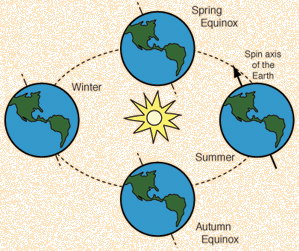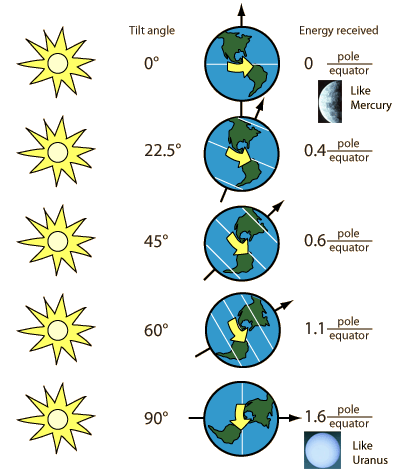Axis Tilt is Critical for Life
 |
The tilt of the Earth's spin axis with respect to the plane of its orbit about the sun (the ecliptic plane) is important for a habitable Earth. The Earth's spin axis is tilted 23.5° with respect to the ecliptic, giving moderate seasons and preventing temperature extremes anywhere on the planet. |
|
This illustration, patterned after Ward and Brownlee, summarizes the effects of different tilt angles with respect to the ecliptic plane. The lines parallel to the equator are the polar circles where the sun never sets in midsummer and never rises in midwinter. |
 |
The tilt angles range from zero for Mercury to 90 degrees for Uranus. Both extremes produce drastic temperature differences across the planet. Mercury gets maximum solar energy at its equator. Mercury's rotation has been slowed by tidal forces by being so close to the Sun. It's rotation period is 59 days, rotating three times for each two orbits of the planet around the Sun. For angles above 54 degrees, the poles get more energy than the equator. "Although our viewpoint is certainly biased, our planet's tilt axis seems to be 'just right'". (Ward and Brownlee)
Not only is the Earth's angle of tilt close to the optimum value, it also seems to have been essentially constant. That is crucial for the development of advanced life. Since there are torques which could have caused the axis direction to change, it appears to have been the stabilizing effect of the Moon that has kept the spin axis in a stable direction to provide a stable climate for life.
Habitable planet concepts
Ward & Brownlee
Ch 10
| HyperPhysics***** Astrophysics | R Nave |